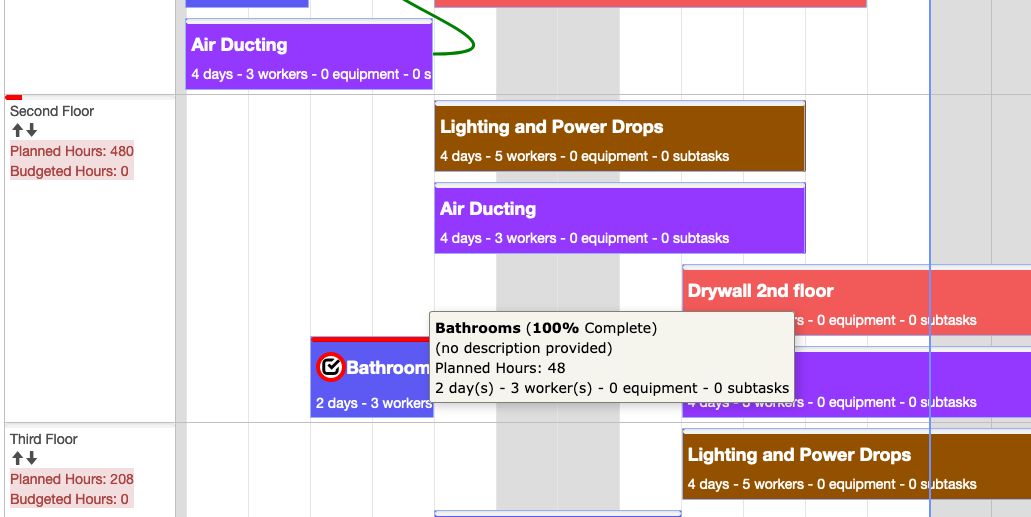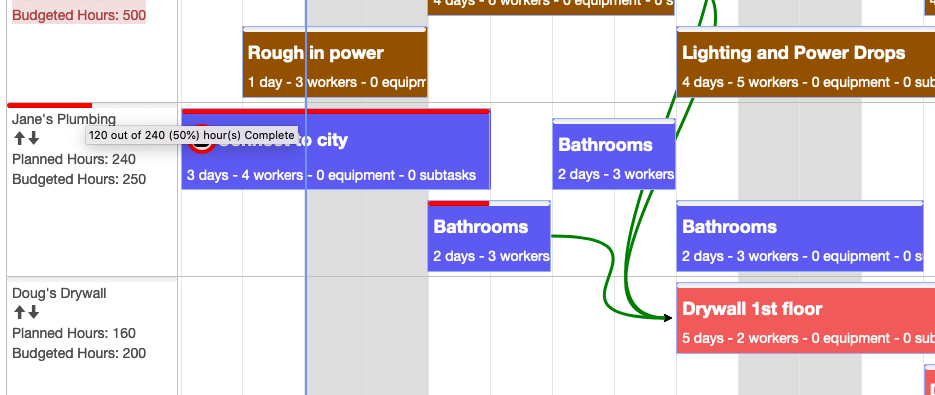“Pull Planning” is a planning mechanism used in construction to work backwards from a milestone and plan all of the tasks needed to complete that milestone. This effort is typically done in a “Big Room” (all the trades get together to talk through the tasks as they’re building backwards), and they use sticky notes (one color for each trade) to show what the task is, and which trade needs to do it. They break tasks down into “swim-lanes” to show commonality between the tasks. But if you’re finding this blog, you likely already know that!
Our construction module on top of DECK is called DECK LEM (Labor, Equipment & Materials). Inside of DECK LEM, among other things, we have a really innovative pull planning module. Everyone is tossing around the word “innovative” these days, almost devaluing it. You’re likely saying to yourself right now: “Yea – ‘digital sticky notes’ – I get it; ‘Innovative’” with a sarcastic tone. I know I would be saying that if I were reading this!
Before you leave, let’s think about this in a different way. Many companies have an “internal spin” on how they do pull planning. One of our General Contractor builds pull plan’s strictly (militantly?) by project area. Their swim-lanes are “Lobby”, “Kitchen”, “First Floor”, “Second Floor”, “Parking Lot” – etc. As a trade in their Big Room, you need to be at the top of your game to ensure that you see only (and all of) your colored tasks in the sea of sticky notes to ensure that you know what you’re doing.
DECK Pull Planner allows the GC to run the big room based on project area. You can create a task in say the Second Floor swim-lane, and assign it to Jane’s Plumbing (the subcontractor for the plumbing tasks). You can use this digital view to see who’s all scheduled to be on the second floor on any given day, and where bottlenecks might be. A brilliant reason (or, well thought out side effect?) to strictly pull plan based on project area.

But with DECK LEM, Jane is able to flip to the “Trades” tab and see everything her crew is doing in one swim-lane dedicated to them, and them alone.

She’s also able to see the number of hours her company “bid” on the job – they show up as the budgeted hours for the swim-lane. And, as the pull plan is being built, she – and the GC – are able to see how many hours are planned for the plumbing trade. As they say, the earlier one can catch a potential problem, the less expensive it is to fix. DECK Pull Planning can see if the plan is going to fit the budget based on the detailed breakdown right from the start of planning. Talk about early!
What about the “Big Room”? COVID-19 has changed the way we work. DECK Pull Planning allows a virtual Big Room event to be conducted. All the trades are logged into the project pull plan while on a conference call, and they’re discussing the project like always. All changes that anyone makes are view “live” without anyone having to refresh their browser.
And in THIS “Big Room”, there’s no traffic jam in front of the pull planning wall as everyone is in the comfort of their own office… Or home… Or truck cab…
There are MANY more innovative things inside of the DECK Pull Planning. Contact us as we’d love to show you!
You can find out more about our DECK Pull Planning module here.
